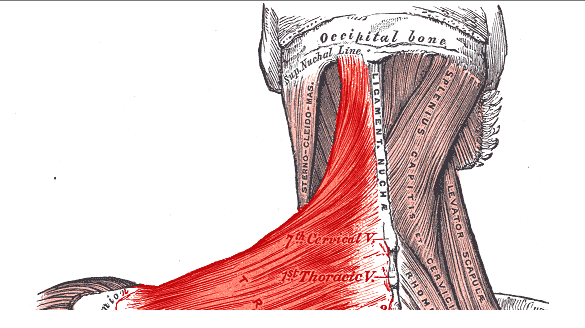The perpetuation of “flat earth” ideology is extremely common in the fitness industry. There is more noise than truth in what most online experts espouse and trying to navigate your way to the truth is nearly impossible if you don’t have a clinical and academically based education in the complex system that is the human body.
Hacks and shortcuts to some desired training or fitness goal tend to always be the flavor of the month. Sometimes they have slivers of truth but often the concepts are poorly understood by the social media expert so the message lacks integrity and effectiveness.
I will tell you why the upper trapezius is NOT the cause of your problem. If it is not the cause of your problem treating it with massage therapy, massage guns, or any other manual therapy will not give you a long-lasting result. If your trainer or physician believes the upper trap is the cause of your problem, you will most likely not get your problem corrected. Here are 3 main reasons why the upper trap is not the problem.
3 Key Reasons Why the Upper Trapezius Muscle is NOT the Cause of Your Shoulder or Neck Pain
1. The upper trapezius does not connect to the neck vertebra at all from C1 to C6 (most of the bones of your neck). It attaches to the skull near the top of your neck and to the last neck vertebra the bottom. It cannot be a prime mover of bones it does not attach directly to.
2. The attachment of the upper trapezius to the skull and C7 at the bottom of the neck is made up of Type 1 muscle fibers (Type 1 fibers are slow twitch and postural with Type 2 fibers being fast twitch and move for movement). That means the upper trap is more for controlling movement and creating stability than moving bones or joints.
3. The angle and direction of the muscle fibers of the upper trapezius and where they attach cannot create enough force to elevate the shoulder or move the arm overhead (upward rotation of the scapula). The laws of physics are always at play. Muscles need leverage and mechanical advantage to move bones. The upper trap doesn’t have that.
The upper trapezius serves to create a stable platform for normal shoulder movement and participate in the force couple (group of muscles working together towards a common goal) to upwardly rotate the scapula to make overhead movements or reaching possible.
Your shoulder expert should assess your shoulder and show some improvement without treatment.
I have witnessed evidence of this in patients for years and can test each patient individually to determine how their shoulder pain is related to a dysfunction of some muscles of the shoulder region. When muscle imbalances of the shoulder region are the causative factor in shoulder pain, I almost always make changes in the movement patterns of the muscles. These changes are addressing the motor control center of the brain. This will usually decrease the patient’s pain and increase their pain-free or at least pain-reduced active range of motion, on their first visit.
If your trainer is blaming the upper trapezius, psoas, vastus medialis oblique, hamstrings or transverse abdominus for your problem, you could be with the wrong person. These muscles tend to be global stabilizers and are prominent in compensation patterns (your brain uses different muscles for a specific movement need). The big challenge is that each person can have a slightly different recipe for correction, so doing the same thing for every shoulder of hip problem is not often the fix.
Call 610-444-8155 to get scheduled for a shoulder assessment.
Dr. John Wilkins – 27 years as Chiropractor and Strength Coach
Board Certified in Chiropractic and Physical Therapy Modalities
Dynamic Neuromuscular Stabilization I, II, III Certified
Fellow Clinical Biomechanics of Posture
Certified Strength and Conditioning Specialist (CSCS)
Certified in Active Release Technique
Certified in Functional Movement Screen

